标签 NASA 下的文章
从国际空间站拍摄到的地球上方的渐亏凸月 The waning gibbous moon is pictured above the Earth's horizon from the International Space Station (© NASA)
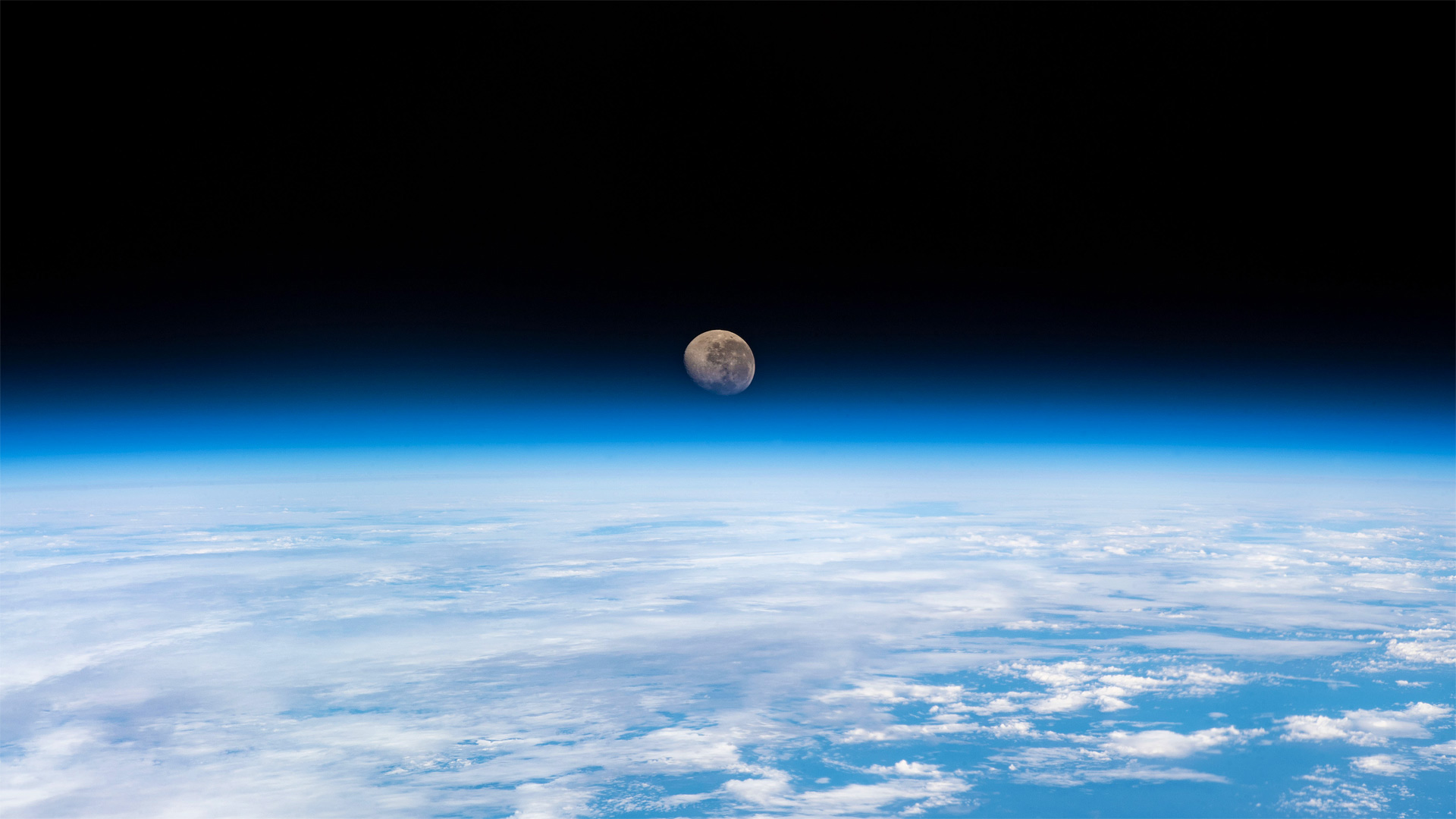
从国际空间站拍摄到的地球上方的渐亏凸月 The waning gibbous moon is pictured above the Earth's horizon from the International Space Station (© NASA)
尤里之夜的凸月 A gibbous moon on Yuri's Night
International Day of Human Space Flight
Sixty-one years ago today Yuri Gagarin became the first human to see Earth from space, with a view likely similar to this image of the waning gibbous moon from the International Space Station. With a call of 'Poyekhali!' ('Off we go!'), Gagarin launched into low Earth orbit in his Vostok 3KA spacecraft, making history in less than two hours with a complete trip around the planet.
'International Day of Human Space Flight' is observed today by astronomy lovers of all nationalities, it becomes an international celebration held every April 12 to commemorate milestones in space exploration.
国际人类太空飞行日
61年前的今天,尤里·加加林(Yuri Gagarin)成为第一个从太空看到地球的人,其视角可能与国际空间站拍摄的这张月亮逐渐变圆的图像相似。喊着“波耶卡利!”我们在史上不到两个小时的时间里发射了“加加林”号宇宙飞船。
“国际人类太空飞行日”今天由各族天文爱好者庆祝,它成为每年4月12日为纪念太空探索里程碑而举行的国际庆祝活动。
绚烂的仙女座星系 Andromeda galaxy (© NASA/JPL-Caltech)
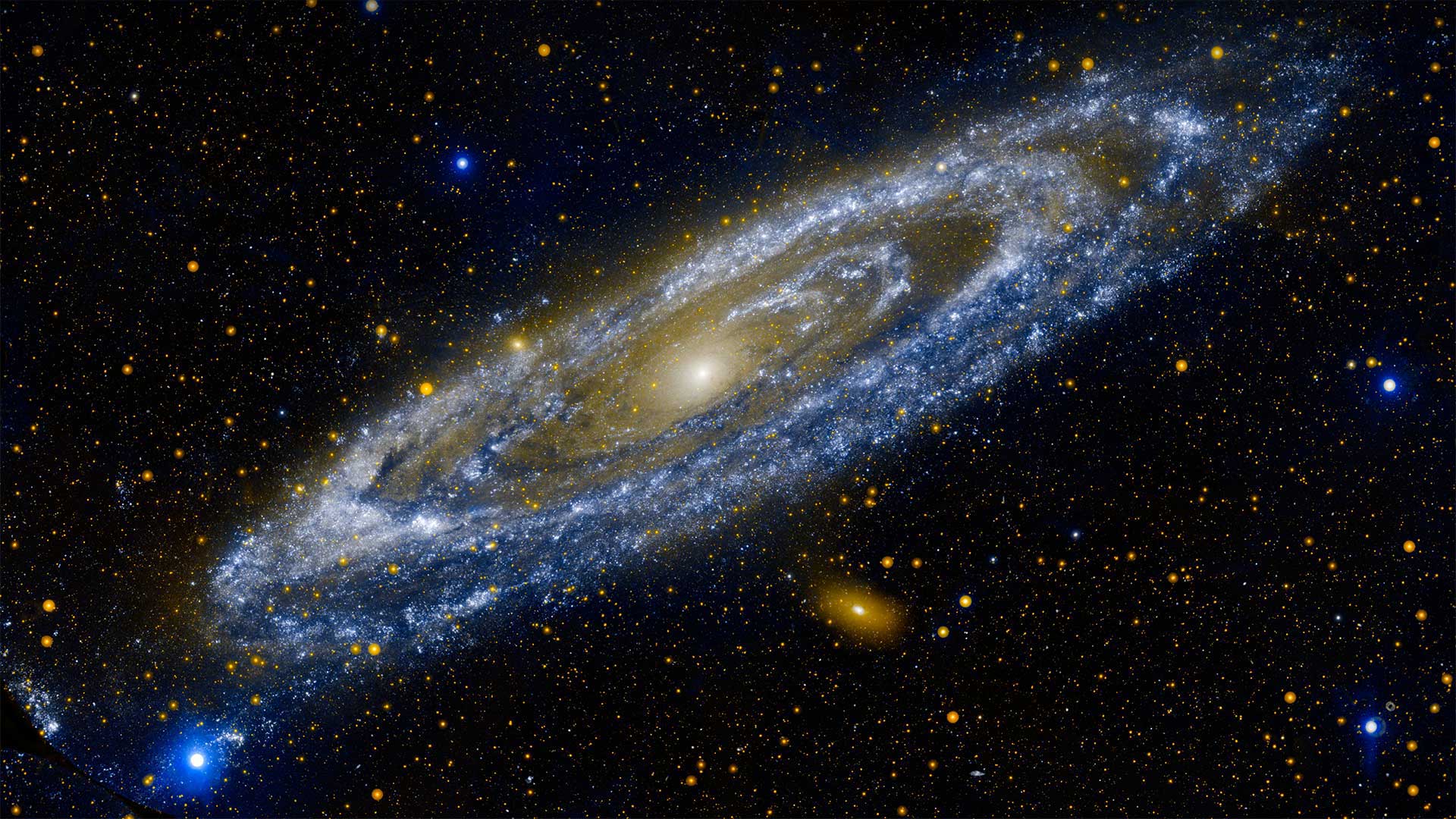
绚烂的仙女座星系 Andromeda galaxy (© NASA/JPL-Caltech)
Hey neighbor, it's World Space Week!
Space is a big, lonely place, so it's nice to know we have neighbors. The pictured Andromeda Galaxy is our Milky Way's closest—right next door at 2.5 million light years away. Our cordial relationship with Andromeda goes back about 10 billion years to when both galaxies were still forming. But trouble is brewing: Andromeda is on a collision course with the Milky Way, due for impact in 4 billion years. This neighborhood's about to get rough…
Sometime in the 4 billion years we have left (preferably this World Space Week, October 4-10), we encourage you to turn your attention to the stars, whether on a trip to the countryside, the planetarium, or your backyard. World Space Week's 2021 theme is 'Women in Space'—and it's also the theme of today's quiz. How much do you know about the final frontier's famous females?
嘿,邻居,这是世界太空周!
太空是一个又大又孤独的地方,所以知道我们有邻居很好。照片中的仙女座星系是我们银河系最近的邻居,距离我们250万光年远。我们与仙女座星系的亲密关系可以追溯到大约100亿年前,当时两个星系都还在形成。但麻烦正在酝酿:仙女座正在与银河系发生碰撞,预计将在40亿年后发生碰撞。这附近就要闹了…
在我们剩下的40亿年中的某个时候(最好是10月4日至10日的世界空间周),我们鼓励你将注意力转向星星,无论是去乡村、天文馆还是你的后院。2021年世界空间周的主题是“太空中的女性”——这也是今天测验的主题。你对《最后的边疆》的著名女性了解多少?
蔚蓝色的海王星 Neptune (© NASA/JPL)
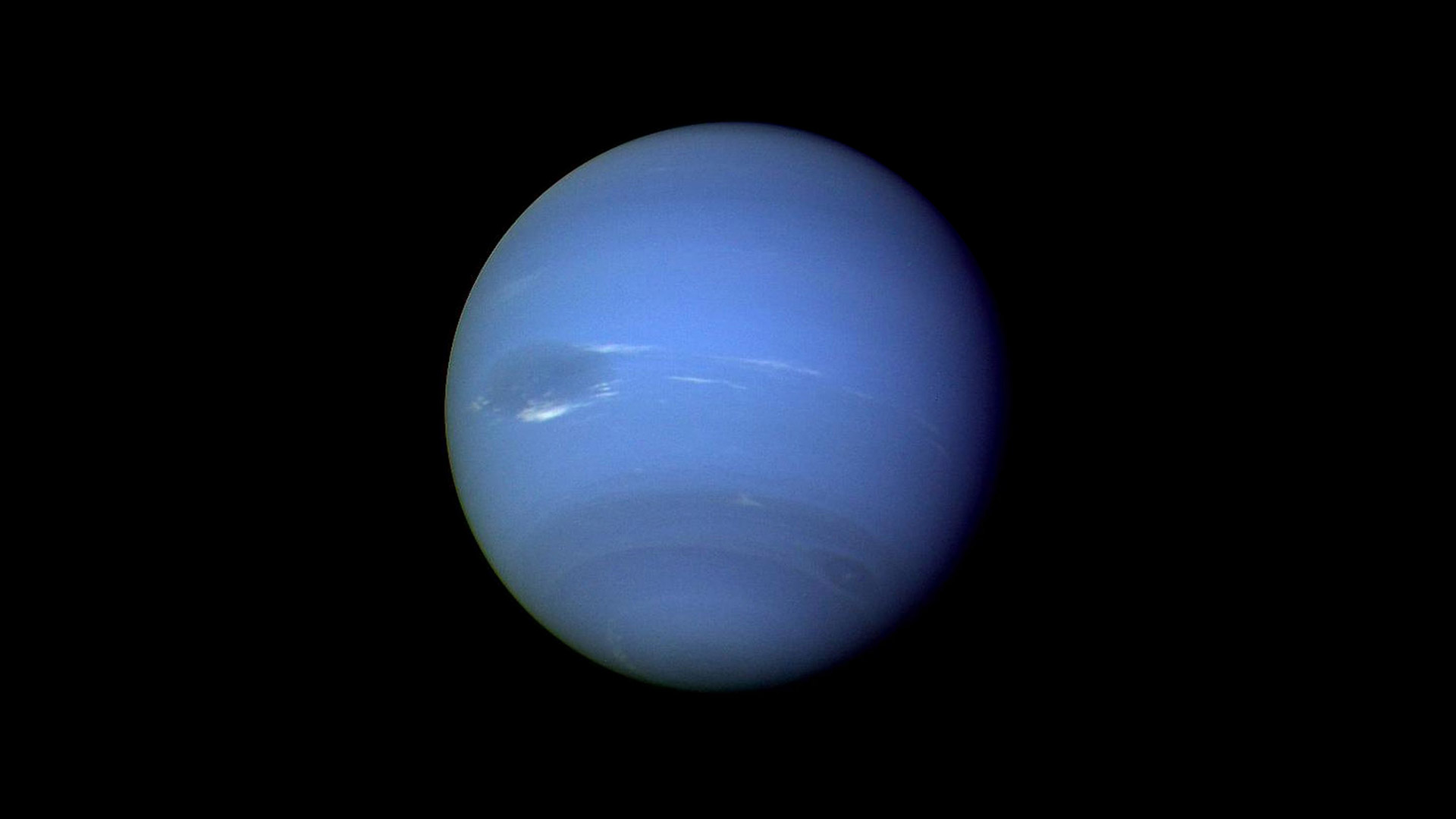
Last stop before leaving the solar system
Official confirmation of Neptune's presence in our solar system came on September 23, 1846. Credit for this discovery inspired a dust-up in the international astronomy community, as scientists from both Britain and France claimed they had been the first to see the 8th and most-distant planet in our solar system. Eventually peace was brokered, and credit is now shared between the two factions. But those 19th-century astronomers were using solar system coordinates first recorded by Galileo in 1612. The Italian polymath correctly mapped Neptune's position more than 200 years earlier using a less powerful telescope. Galileo mistook Neptune for a star—but his coordinates prompted many stargazers who came along after him to look in the correct direction and identify Neptune.
离开太阳系前的最后一站
1846年9月23日,官方证实海王星存在于我们的太阳系。这一发现的功劳在国际天文学界引起了轩然大波,英国和法国的科学家都声称他们是第一个看到太阳系第八颗也是最遥远的行星的人。最终促成了和平,现在这两个派系共享了荣誉。但是那些19世纪的天文学家使用的是伽利略在1612年首次记录的太阳系坐标。这位意大利博学者在200多年前用一台功能较弱的望远镜准确地绘制了海王星的位置图。伽利略误认为海王星是一颗恒星,但他的座标促使许多跟随他的观星者朝着正确的方向寻找海王星。
位于阿肯色州和密西西比州交界处的密西西比河 Mississippi River on the border between Arkansas and Mississippi (© NASA)
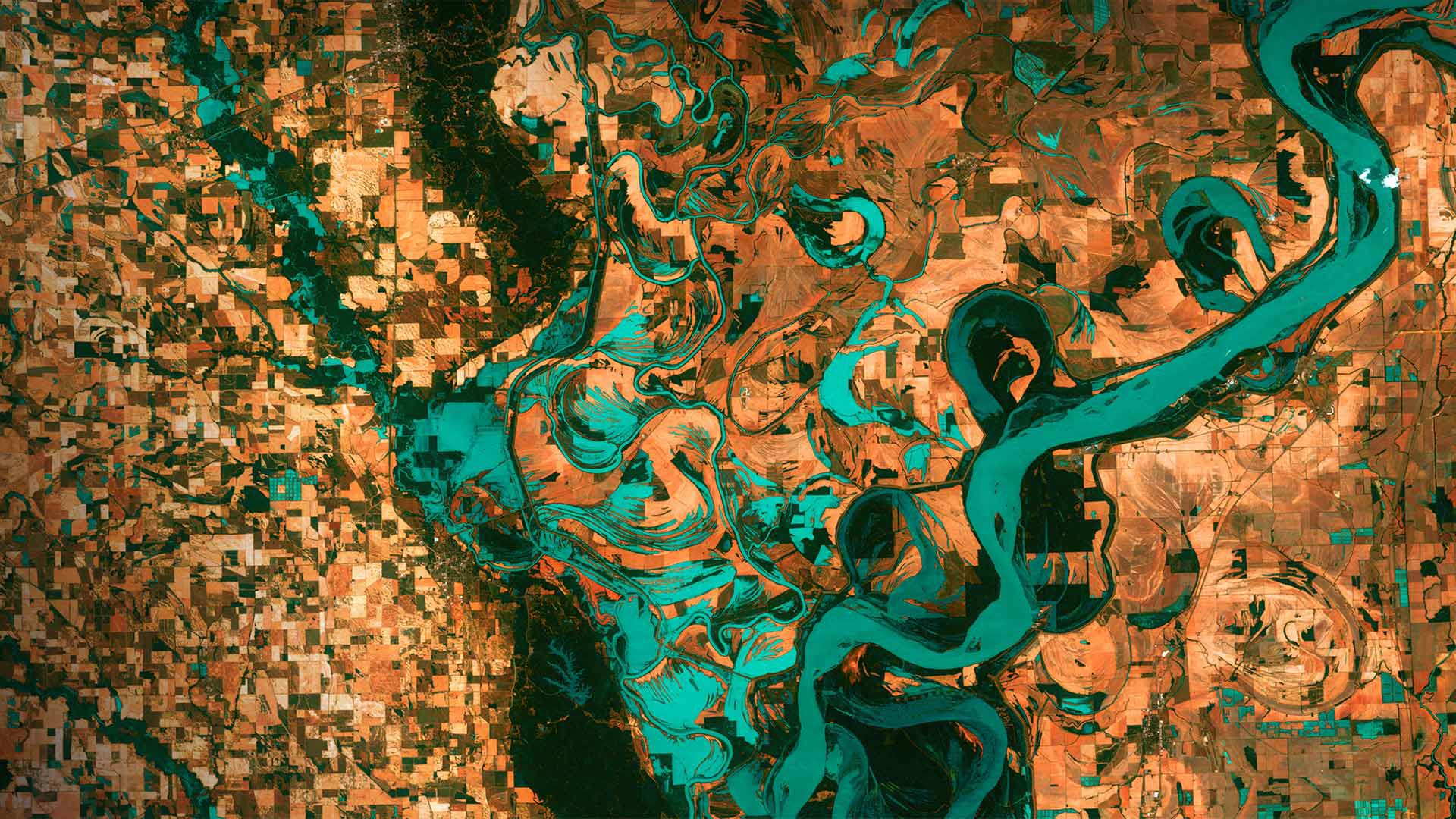
位于阿肯色州和密西西比州交界处的密西西比河 Mississippi River on the border between Arkansas and Mississippi (© NASA)
Gazing down on planet Earth
It's Earth Day today and we are high above the blue marble looking down on the border between Arkansas and Mississippi. Those small, blocky shapes are towns, fields, and pastures–the teal green is the mighty Mississippi River. Anyone who has flown in the window seat of an airplane and has gazed down at Earth below might wonder why the colors in this image are so unreal. That's because they are. These images were taken in 2013 by Landsat 7, a NASA satellite that uses thermal infrared sensors to help scientists better distinguish flora, fauna, water, and manmade objects. For almost 50 years, NASA has been using satellite imagery to understand how climate change and population growth are affecting our fragile planet. These satellites help NASA see where deforestation and wildfires are happening, where glaciers are melting, and how rising waters are encroaching on cities.
The biggest cause of these changes? According to NASA, it's us. Since the first Landsat launched in 1972, the Earth's population has almost doubled, from 4 billion people then to 7.8 billion today. But there is some good news to mark this Earth Day: The Mississippi River we see here is much less toxic now than it was back in 1972, thanks to environmental laws and regulations.
俯瞰地球
今天是地球日,我们在阿肯色州和密西西比州交界处的蓝色大理石上方俯瞰。那些小而块状的形状是城镇、田野和牧场——青绿色是浩瀚的密西西比河。任何坐过飞机靠窗座位的人,都可能会想,为什么这张照片中的颜色如此不真实。那是因为他们是。这些图像是2013年由美国宇航局的陆地卫星7号拍摄的,该卫星使用热红外传感器帮助科学家更好地区分动植物、水和人造物体。近50年来,美国宇航局一直在利用卫星图像来了解气候变化和人口增长是如何影响我们这个脆弱的星球的。这些卫星有助于美国宇航局了解森林砍伐和野火正在发生的地方,冰川正在融化的地方,以及上涨的海水如何侵蚀城市。
这些变化的最大原因是什么?据美国宇航局说,是我们。自从1972年第一颗陆地卫星发射以来,地球人口几乎翻了一番,从当时的40亿人增加到今天的78亿人。但是,有一些好消息值得纪念这个地球日:由于环境法律和法规,我们在这里看到的密西西比河现在的毒性比1972年时要小得多。
木星及木卫一的蒙太奇图像 Montage of images of Jupiter and its volcanic moon Io (© NASA/Johns Hopkins University Applied Physics Laboratory/Southwest Research Institute/Goddard Space Flight Center)
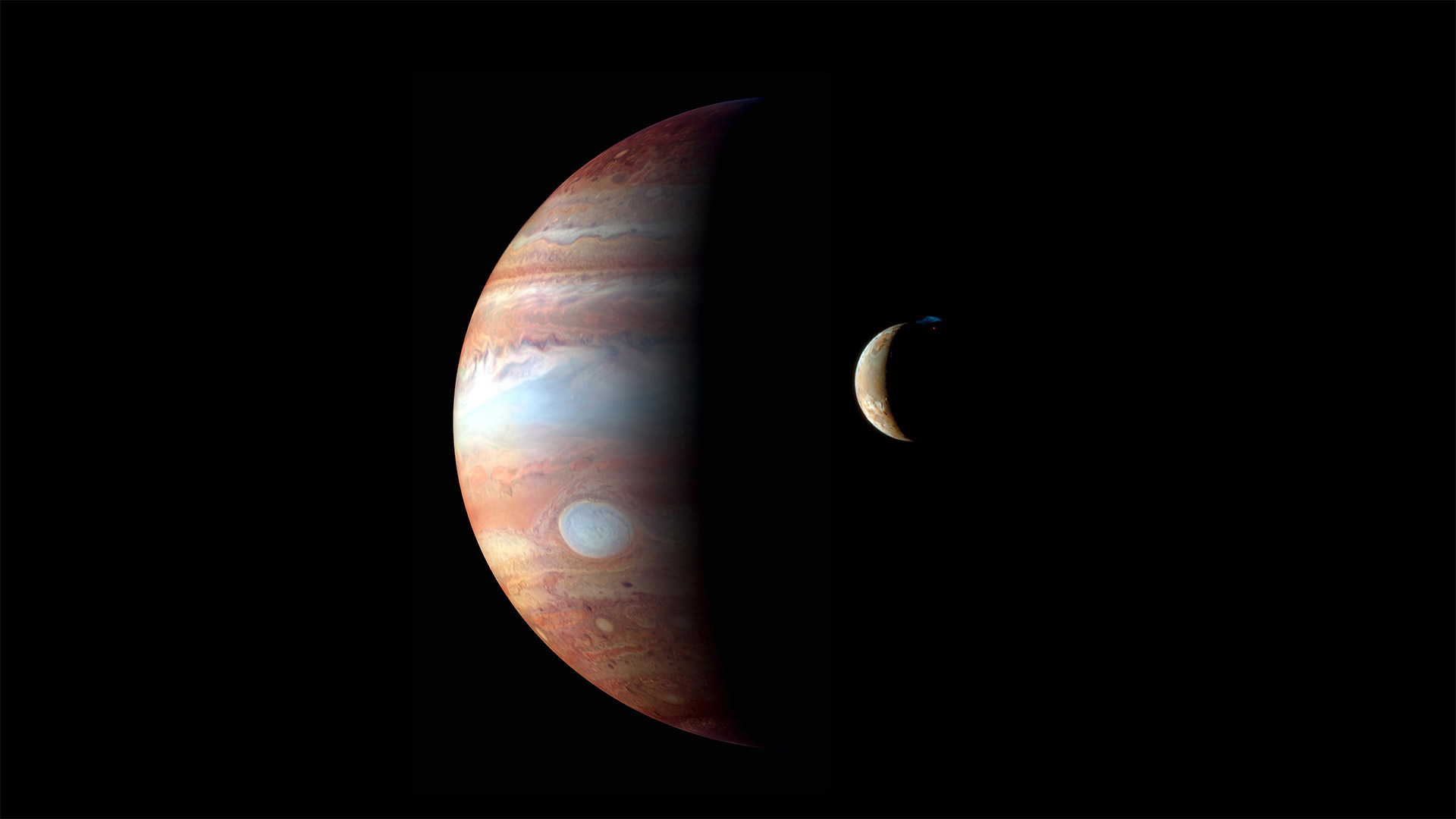
木星及木卫一的蒙太奇图像 Montage of images of Jupiter and its volcanic moon Io (© NASA/Johns Hopkins University Applied Physics Laboratory/Southwest Research Institute/Goddard Space Flight Center)
Infrared Jupiter, erupting Io
To celebrate World Space Week, we're featuring this montage of images of Jupiter courtesy of the New Horizons probe's flyby of the planet in 2007. If Jupiter looks a little different than you're used to seeing, it's because it was imaged using the space probe's near-infrared imaging spectrometer. In this false-color image, Jupiter's high-altitude clouds, like its stormy Great Red Spot, are rendered white, while deeper cloud formations take on reddish hues. The planet's innermost moon, Io, is captured in a true-color composite image during one of its frequent volcanic eruptions. A close look will show lava is glowing red beneath the blue and white plume of particles being ejected into the moon's thin atmosphere.
Space Week is a UN-recognized event that runs each year from October 4, which is the anniversary of the launch of Sputnik in 1957, to October 10, the anniversary of the signing of the Outer Space Treaty in 1967. This year's theme is 'Satellites Improve Life.'
由哈勃太空望远镜拍摄的大麦哲伦星云 The Large Magellanic Cloud, photographed by the Hubble Space Telescope (© ESA/Hubble/NASA)
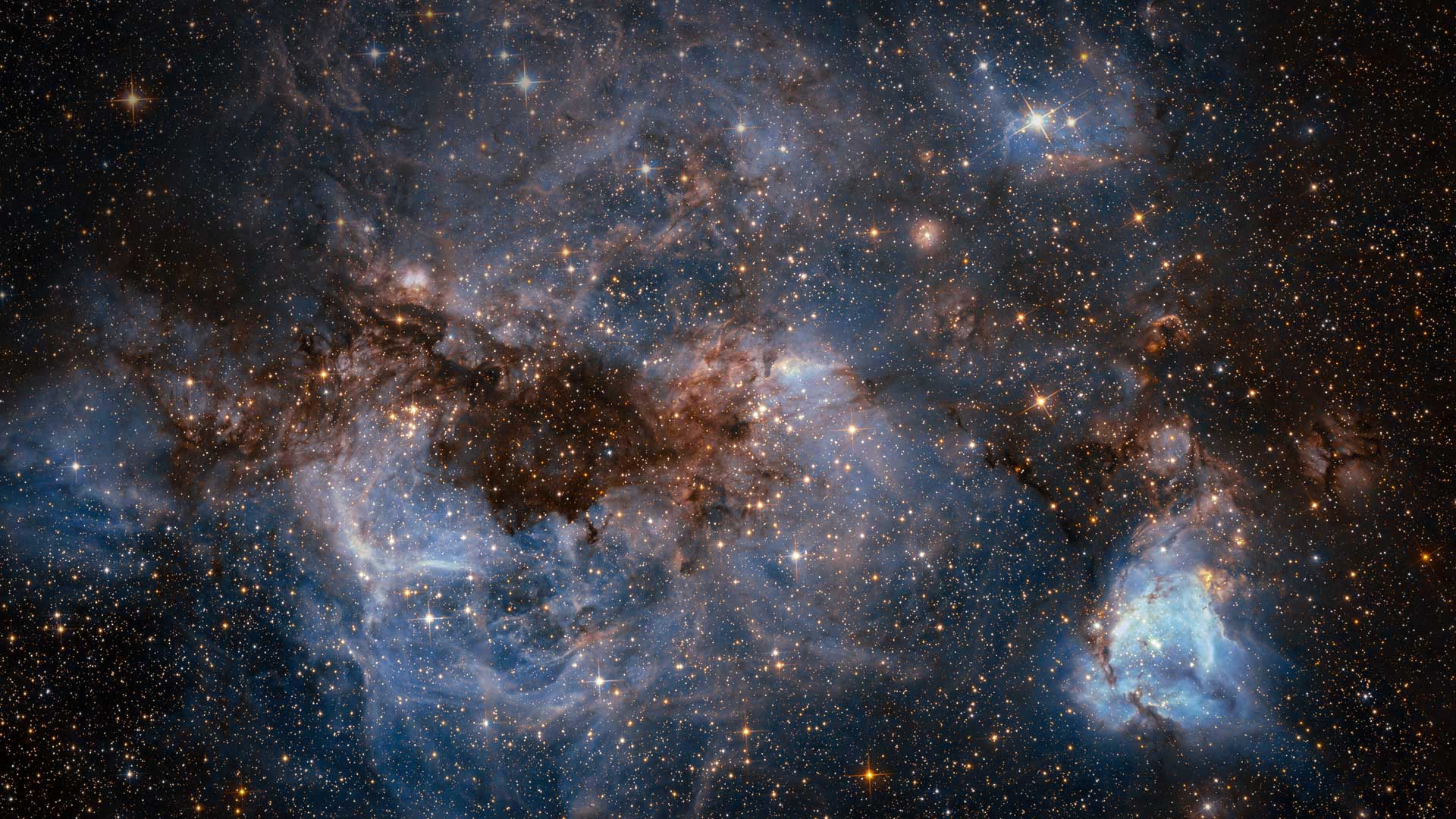
由哈勃太空望远镜拍摄的大麦哲伦星云 The Large Magellanic Cloud, photographed by the Hubble Space Telescope (© ESA/Hubble/NASA)
Celebrating 30 years of eye-opening images
On this day in 1990, the Hubble Space Telescope entered orbit in the cargo bay of the space shuttle Discovery. Shortly thereafter, it began its continuing mission to capture images of our universe from low Earth orbit, free of the obstructions of clouds and the distortions of the atmosphere. Like its namesake, the great astronomer Edwin Hubble, the Hubble Space Telescope has transformed our understanding of the cosmos. Some of the telescope's greatest contributions include its Deep Field Images—which peer back billions of lightyears—or its with jaw-dropping images of objects closer to home, like the one on today's homepage, which shows a maelstrom of glowing gas and dark dust within one of the Milky Way's satellite galaxies, the Large Magellanic Cloud.
NASA estimates that Hubble's mission will continue for another 10-20 more years. Next year, it will be joined in orbit by the James Webb Space Telescope, which will be able to peer even farther into space and with greater sensitivity across more wavelengths.
NASA astronaut works on International Space Station during a spacewalk in 2006 (© NASA)
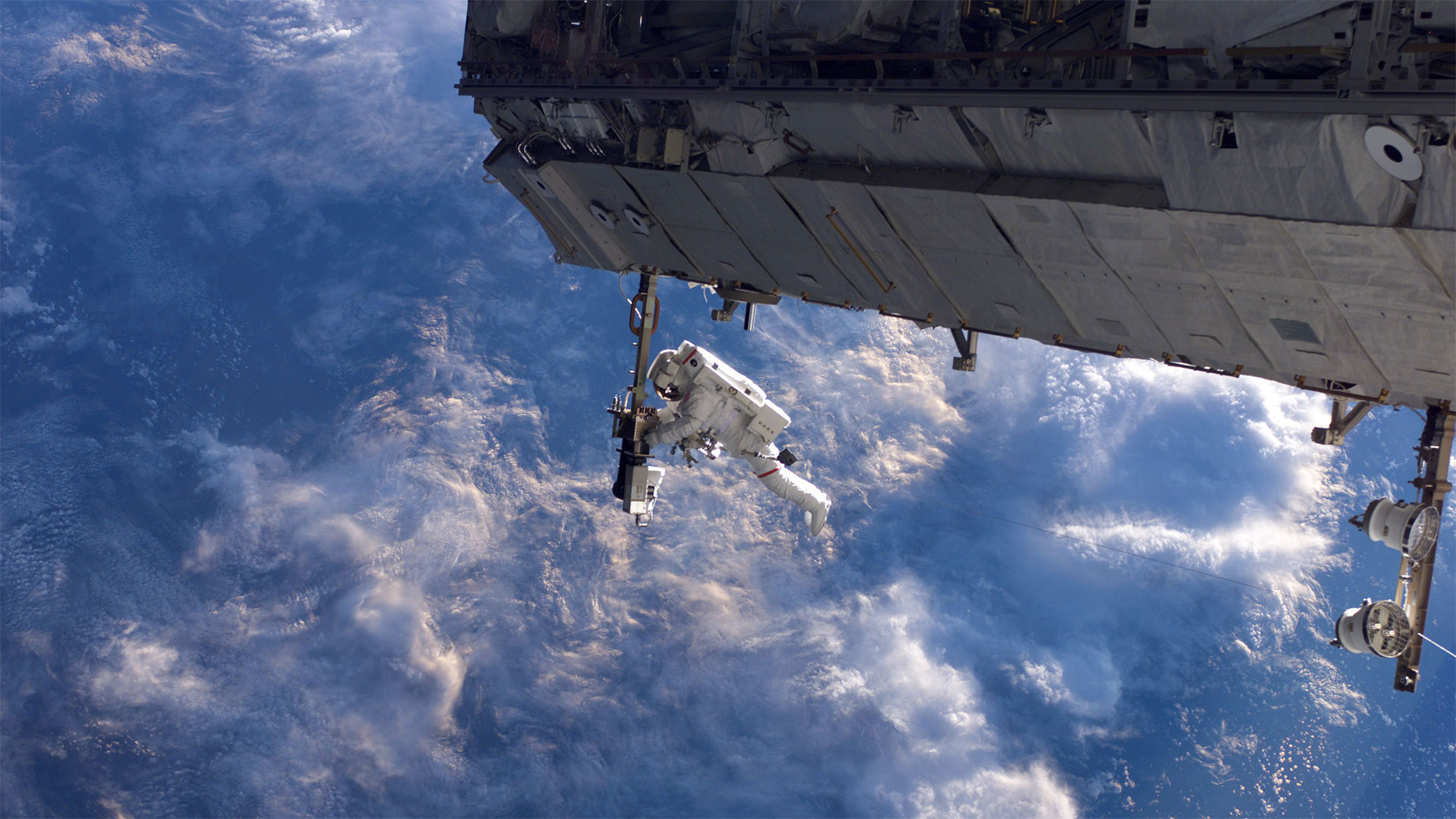
NASA astronaut works on International Space Station during a spacewalk in 2006 (© NASA)
A stroll above the stratosphere
If this photo from 200-plus miles above Earth dizzies you, imagine how it felt to be Alexei Leonov on March 18, 1965. The Soviet cosmonaut achieved the first-ever extravehicular activity (EVA—but you and I just call it a spacewalk). He spent about 20 minutes outside the orbiting Voskhod 2 capsule. It was the ultimate risk: no one knew just what could happen to a human body in the vacuum of space. Near heatstroke, drenched with sweat, and with his suit dangerously inflating, Leonov barely made it back inside the airlock.
Of course, the art of EVA has been perfected since, and that vertigo-inducing panorama is now the view from the office for those aboard the International Space Station. The spacewalker you see here isn't Leonov but NASA's Robert Curbeam busily replacing a faulty component. On this mission in 2006, Curbeam set a record with four EVAs in one spaceflight, spending over 24 hours outside the vehicle. Since the ISS's first spacewalk in 1998, over 227 EVAs have been performed by a large cast of astronauts—including a milestone excursion in 2019 that employed the first all-female crew.
美国宇航局新视野星际探测器拍摄的冥王星新月 Pluto's crescent imaged by NASA's New Horizons interplanetary space probe (© NASA/JHUAPL/SWRI/Science Photo Library)
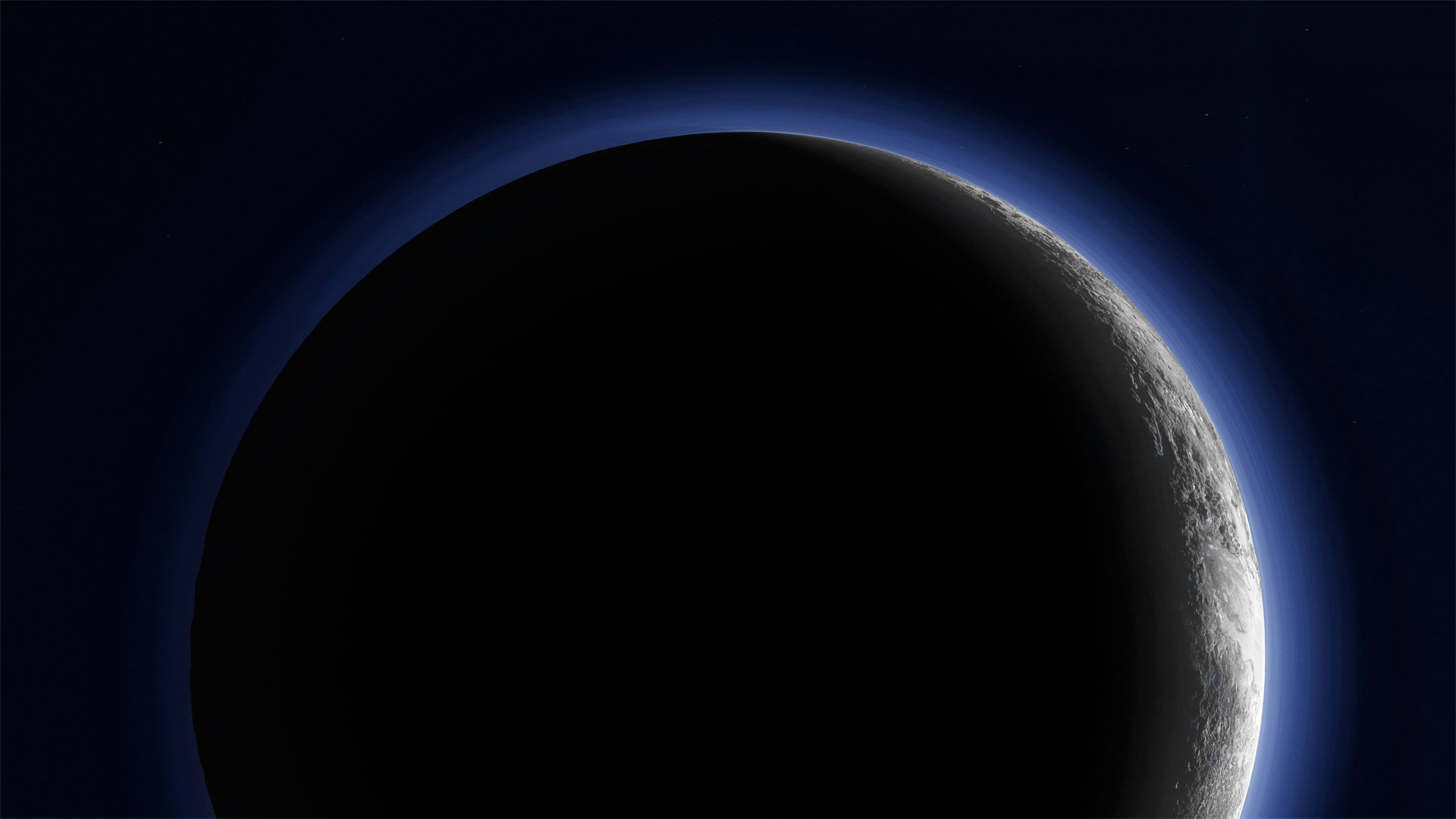
美国宇航局新视野星际探测器拍摄的冥王星新月 Pluto's crescent imaged by NASA's New Horizons interplanetary space probe (© NASA/JHUAPL/SWRI/Science Photo Library)
Too awesome to be a planet
Pluto was first spotted on this day in 1930 by Clyde Tombaugh, a 23-year-old astronomer at Lowell Observatory in Flagstaff, Arizona. Because it’s so far away—about 40 times as far from the sun as Earth is—scientists knew relatively little about Pluto until the New Horizons spacecraft reached it in 2015. In a flyby study, the craft spent more than five months gathering detailed information about Pluto and its moons. What did they find out? There’s a heart-shaped glacier, blue skies, spinning moons, mountains as high as the Rockies, and it snows—but the snow is red.
Once thought to be one of nine full-fledged planets orbiting our sun, in 2006, Pluto was stripped of its planetary status and reclassified as merely a 'dwarf planet.' (Sorry, Pluto.) Though it may no longer be considered a true planet, it’s still the largest dwarf planet of our solar system and holds plenty of mysteries waiting to be discovered.
气泡星云 (NGC 7635) Bubble Nebula (NGC 7635) (© NASA, ESA, and the Hubble Heritage Team STScI/AURA)
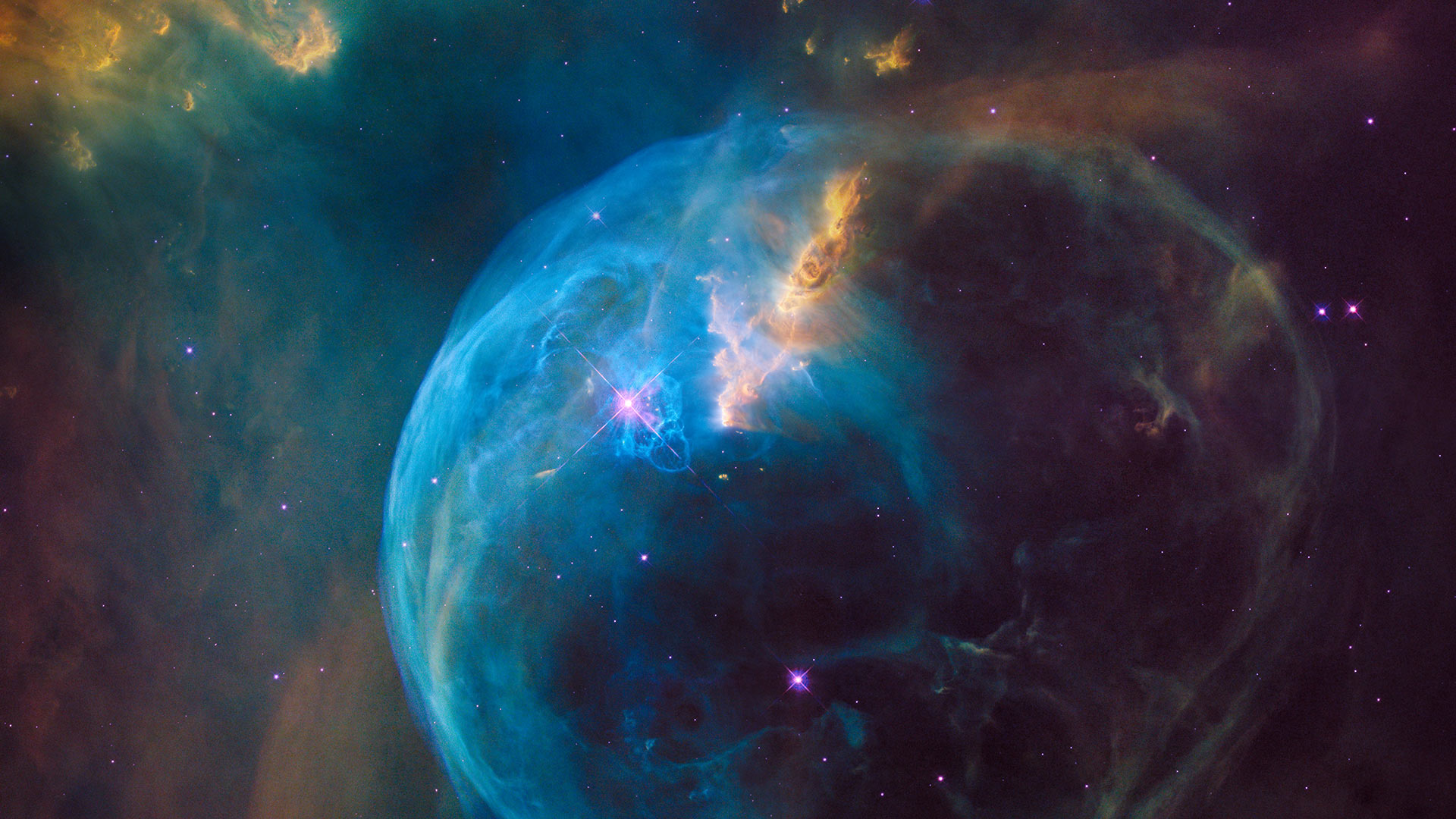
气泡星云 (NGC 7635) Bubble Nebula (NGC 7635) (© NASA, ESA, and the Hubble Heritage Team STScI/AURA)
A star blows a bubble
This giant space bubble is being blown by a massive star visible at the 10 o'clock position inside it. Already over 7 light-years across and expanding at a rate of over 4 million mph, the 'bubble' is actually the shock wave created when expanding hot gas (or stellar wind) hits the cold, interstellar gas that surrounds it. The Bubble nebula was discovered in 1787 by William Herschel. The star inside is living fast and will die young (for a star)—it will likely detonate as a supernova in only 10 to 20 million years. This image was taken in 2016 by the Hubble Space Telescope to mark the 26th anniversary of Hubble's launch into Earth orbit by the STS-31 space shuttle crew. We're showing it to mark the last day of World Space Week, an annual 'international celebration of science and technology, and their contribution to the betterment of the human condition.
木星增强色彩后的一组镜头 Sequence of enhanced-color images of Jupiter (© Enhanced Image by Gerald Eichstädt and Sean Doran, CC BY-NC-SA, based on images provided Courtesy of NASA/JPL-Caltech/SwRI/MSSS)
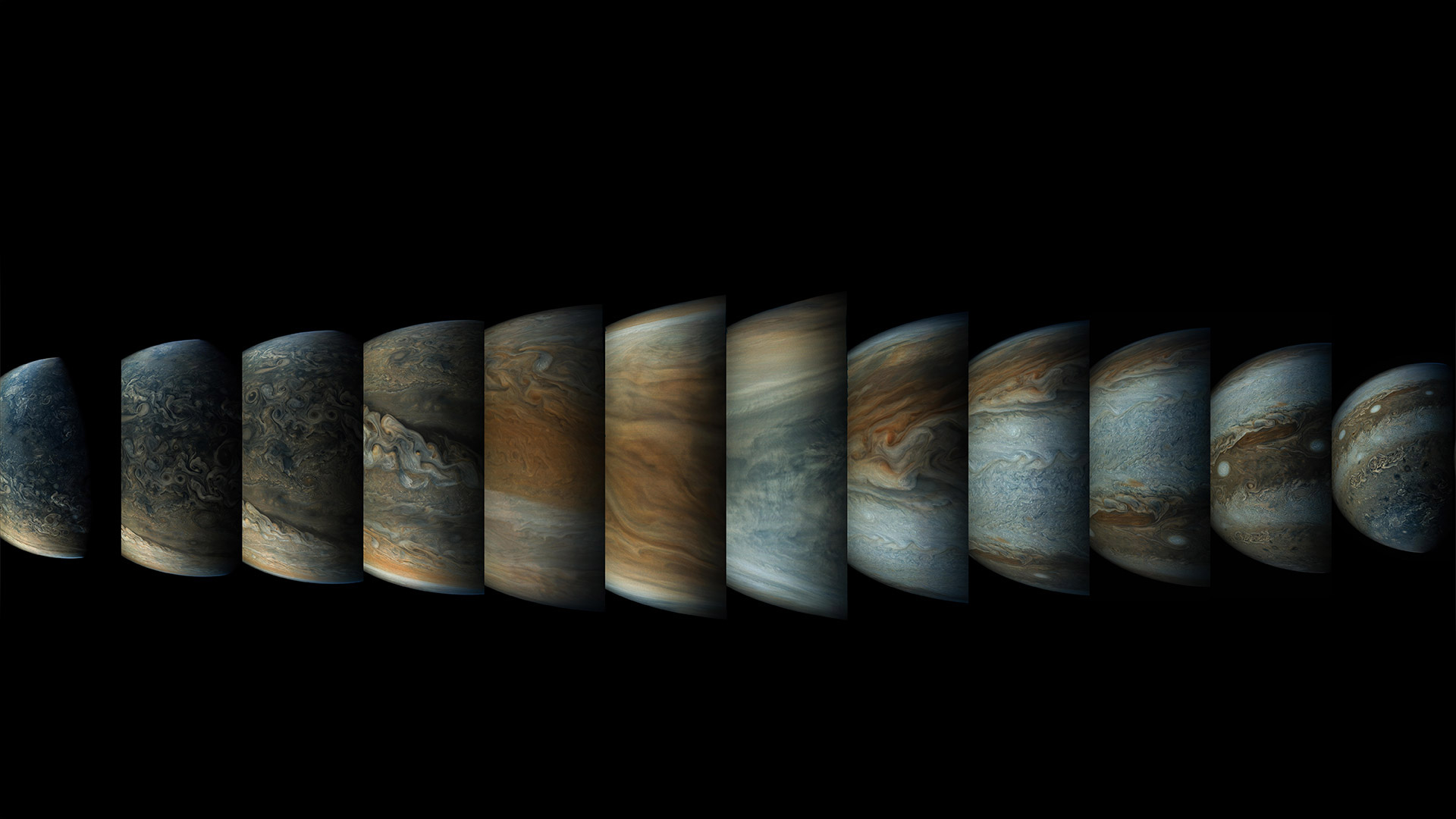
木星增强色彩后的一组镜头 Sequence of enhanced-color images of Jupiter (© Enhanced Image by Gerald Eichstädt and Sean Doran, CC BY-NC-SA, based on images provided Courtesy of NASA/JPL-Caltech/SwRI/MSSS)
Images from NASA's Juno spacecraft as it swoops by Jupiter
For the start of World Space Week, today's homepage features a composite of images taken by NASA's Juno probe as it swooped past Jupiter. Jupiter, the largest planet in our solar system, also has the largest number of moons: 79. Jupiter is the Roman counterpart to Zeus, and so the planet's major moons are named after Zeus's, shall we say, extra-marital partners. So, when it came time to name NASA's most ambitious Jupiter probe, they decided to name it after his wife, Juno, so that she could keep an eye on him. Every 53 days in the course of its wide and complex orbit, the Juno probe makes its closest approach, snapping shots like these as it speeds past the gas giant in just two hours. World Space Week starts on the anniversary of the launch of the very first space probe, Sputnik, which entered orbit around the Earth on October 4, 1957.